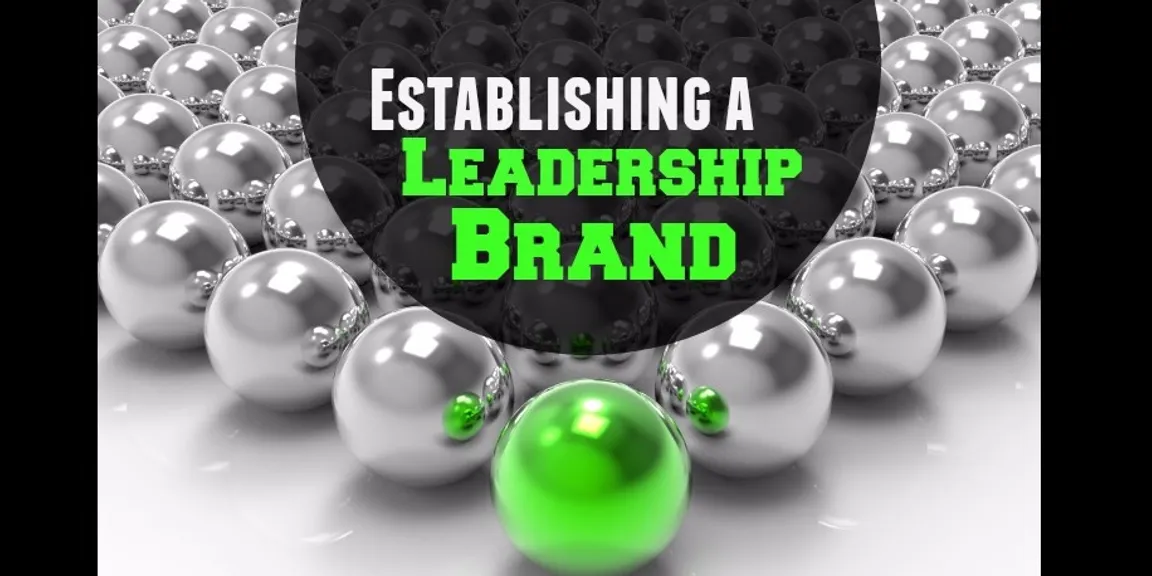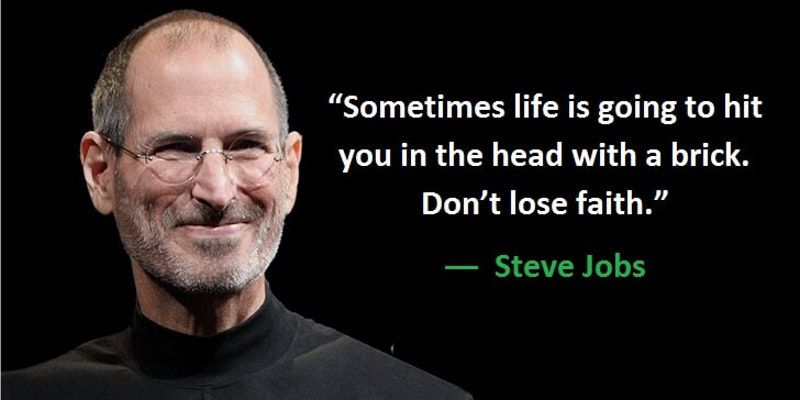

How leadership brand impacts the business?
Learn how important is leadership brand for your business and how to develop it in your organization through a Step Wise Process!
What comes to your mind when we talk about Apple? What comes to your mind when we talk about Virgin Group? What happens when we speak about GE for that matter? Or let's come closer! What happens when we speak about Tata?

Establishing A leadership Brand
Each of the above names reminds us of a specific person! Don’t they!
The names of the companies bring to our conscious memory the faces that have made them successful/big!
It might be Steve Jobs for Apple, Sir Richard Branson for Virgin Group, Jack Welch for GE or Ratan Tata for Tata! Each of them marks some strong traits for us! If not consciously then at least sub-consciously!
Let's delve into each of these traits one by one:
Apple: Innovation and Design
Virgin Group: Style, Adventure, and Luxury
GE: Innovation, Trust, Precision
Tata: Trust, Growth
Now let’s look at the personality traits of respective leaders of these organizations. We will soon realize that they depict the same organizational traits in their personality.
This clearly tells that they have created/developed their organization as per their own personality.
But really?
Actually, it’s vice versa! Organisations they have been in, have developed them to have the traits the organization instills in it! This is what we know as leadership brand!
Leadership Brand:
Unlike popular belief, Leadership brand is not about the personal brand of the leader of any organization!
“It is rather the character of an organization to develop outstanding leadership in one or numerous traits which help their customers and stakeholders in some way or the other”
It is this character of an organization that instills the belief in all the stakeholders i.e. customers, vendors, investors etc., that every part of the organization will fulfill the promises on those leadership traits consistently.
It is not something which is exhibited by a handful of people, but it is something which flows across the length and breadth of the organization as a culture. There might be rules (written or spoken), policies, manuals to promote or spread this kind of culture.
How Leadership Brand impacts Businesses? Empirical Examples

Positive Impact of Leadership on Revenue and Sales
Positive Impact of Leadership on Revenue and Sales:
It is true that the kind of growth that organization experiences is not a result of just one individual who leads. But is an impact of the leadership of the entire organization.
However, the man at the top does make a difference. So to study the impact we shall look into the tenure of the key individuals of two conglomerates who made a difference.
Growth of GE under Jack Welch
Under Welch’s leadership, GE increased market value from $12 billion in 1981 to $280 billion, making 600 acquisitions while shifting into emerging markets. Welch pioneered a policy of informality at the workplace, allowing all employees to have a small business experience at a large corporation.
Jack Welch leadership mantra of being No. 1 or No. 2 in business or else leave it, is still being penned down of a lot of other business people.
Growth of Tatas under Ratan Tata
During RatanTata’s tenure of over 21 Years, the group’s revenue grew to around Rs.4.76 trillion in 2011-12 from Rs.14,000 crore in 1991.
However, the market cap. grew almost 57 times over the course of his tenure as Tata’s Chief.
He has also been conferred some of the highest civilian awards in India i.e. with Padma Bhushan and Padma Vibhushan in 2000 and 2008 respectively.
It is easy to credit or discredit the growth of the organization to solely the leaders highlighted above.
But more to say they do make an impact on how all other stakeholders mobilize to achieve the kind of leadership that an organization aspires to have.
Negative Impact of Leadership on Revenue and Sales
One very important thing to note before I enunciate certain examples is that the best in the business is always ‘FOR NOW’ i.e. market leadership as a brand is in the moment. They can erode and evaporate in a whisker!
Your followers make you a brand! But let's not forget they are in it for their own cause. Your brand is followed as it helps their cause. The moment you stop helping their cause, intangible assets like your brand are going to evaporate and vanish.
This is what you are going to see in the coming examples. Two key take-ups away from them are:
• Always be on your toes to maintain that sort of leadership!
• Negative perceptions way far-reaching than positive ones. While the latter takes years to make, negative one takes few moments to spread.
The downfall of Tiger Woods Brand: We all know the kind of outrage and reaction Tiger Woods story had. In a matter of weeks, most of the major sponsors from AT&T, Accenture to Nike, all had withdrawn from the brand.
Well, there was a specific reason for that. According to a University Study,
“shareholders of major brands associated with Tiger Woods lost nearly $5 Bn - $12Bn in the wake of the news of his extramarital affairs”
This loss is humongous! Considering the kind of impact he made on the Sales for those brands.
Rahul Yadav for Housing.com: We all know the kind of public spat which took place between the investors of Housing.com and its then CEO Rahul Yadav.
Well, its impact is something which is far more important for us to understand. Housing.com which was once valued at around $400 Mn saw its valuation plummet to $50 Mn in just about a year or so.
I agree, only the public was not responsible for this. However, it had a lot of role in the near loss of valuation.
The reason for such loss of value is that, though an act has been done by just one of the stakeholders of the company, it is rubbed against the length and breadth of the organization and hence erodes much of its value.
How to create a Leadership Brand?
Understand and execute the Principles of Leadership Brand
According to a write-up in Harvard Business Review by Norm Smallwood and Dave Ulrich, to create a definitive and infectious leadership brand for its stakeholders, an organization and you i.e. the person in charge need to follow the following principles:
1. Execute the very basics of Leadership.
.jpg?fm=png&auto=format)
Setting Core Strategy
This involves doing the basic aspects of leadership right like, setting a core strategy, find the right talent, developing the talent etc.
The tricky part is actually setting the core strategy. Leadership brand is not something which you want your organization to be.
It is actually what the stakeholders like your customers, investors want you to be. This shall be understood much better in the next point.
2. Create internal goals to match stakeholder expectations.

Create Internal Goal to match Stakeholder Expectations
Your leadership brand goals should be as per stakeholders’ expectation. But being external to the organization, it is difficult to do.
So, you have to internalize those expectations for various teams. For eg: Let’s say you have a restaurant which serves the best food. The best food here has many implications like; Best Ambience, Best staff, Best cooking, Best reception etc.
Now you have to define to internal teams what as per your customers, the person who visits the restaurant to dine considers best in those aspects.
Same as our company's Growth Pixel believes in creating internal team goal as per our customer requirement and expectations.
3. Evaluate your leaders not on internal goals but on stakeholders’ expectations.

Evaluate your leaders not on internal goals but on stakeholders’ expectations
This is again following the above. And however obvious it may sound, it is a difficult one to crack.
Since we control our internal environment, we care to believe that achieving internal goals is enough.
Unfortunately, that is not the case. We have to plan, prepare and execute as per external expectations. For Eg: my food tastes brilliant as per the taste buds of my head chef but they make no sense to my dinner! Make sure you plan as per the diner not as per the head chef!
4. Leadership should be limited to individuals in the organization but should be the way an organization builds and conducts itself.

Leadership should be limited to individuals in the organization
This is by far the biggest mistake that I have seen many big organizations doing. They fail to understand that Leadership in an individual but the entire bench of the organization.
Organizations go on this quest to find the ideal candidate who is going to lead them, however, they fail that the leader is as good as the team. So the Team needs to establish the leadership, not any individual.
Instead of spending millions on developing just one leader, spend thousands on developing leadership culture among the team.
5. The progress on the Leadership brand should be over a long term.

Let us also understand that Brands are built over the years not overnight. Hence long term persistence to the strategy and due course correction is required to build something a leadership culture.
We need to execute and inculcate all the steps for a long run without expecting any short terms results.
Remember;
“Building Brands are always a marathon! Not a sprint!”
Closing Words:
Leadership Brand has a humongous impact on the growth of an organization. We must not forget to estimate its value. Seldom are companies and organization which have sustained and grew over the time without inculcating leadership values in the team.
Hence it is time you take heed of this in your setup. One very popular belief is that I am too small to think of this! Remember creating a culture in a team is taming a belief and value system. Larger the Elephant, more difficult is to tame it!





